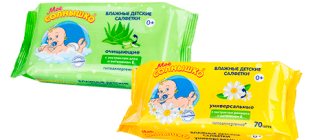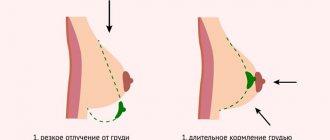Young children are very active and inquisitive. Sometimes children's activities lead to small troubles, such as abrasions, cuts or burns. Most often, parents of young children face such a problem as splinters.
You can plant a splinter anywhere - on the playground, in the playroom, and even at home. If it is not pulled out in time, an inflammatory process may begin with the formation of pus, so all parents should know how to remove a splinter correctly and quickly.
Splinter in the finger: consequences
It is imperative to remove a splinter of any origin, otherwise the consequences can be very serious.
If a piece of wood or glass, on the surface of which bacteria and microbes live, gets under the skin, the inflammatory process will begin very quickly.
Dangerous! Some parents prefer to wait a little while until an abscess forms on the affected area so that the splinter is removed naturally along with the pus. Under no circumstances should this be done, as the child may die from rapid blood poisoning.
Another danger of a splinter getting under the skin is tetanus. If a young child is not given the tetanus vaccine on time, the risk of paralysis and death is almost 50%.
Glass splinter in a small child
Most people are accustomed to thinking of a sharp piece of wood as a splinter, but this is not so. This can be any foreign body that has entered the skin. It could be a plant thorn or even a small piece of glass.
When glass elements get under the skin, it is not always possible to diagnose the pathology visually, so if a child’s finger or hand is swollen, reddened, and palpation reveals acute localized pain, it is necessary to urgently contact the surgeon on duty.
Important! Failure to provide timely assistance can lead to serious inflammation and the development of gangrene. In this case, the child will need amputation of the affected limb.
Where can it appear and where does it most often occur?
A splinter is a foreign body that has penetrated under the skin.
The depth of damage to the epidermis may vary.
Splinters are classified into metal, wood, glass, or may be particles of other materials.
A foreign object penetrates the skin upon contact with its carrier. Children, for example, can get a splinter when playing with sticks, during a fall, or in other traumatic situations.
Most often, children have splinters in the following areas of the body:
- on the face;
- on foot;
- on the elbows;
- on the knees;
- under the nails;
- on the fingers or toes.
How to painlessly remove a splinter with a needle: the traditional method
If the child is calm and not afraid of the needle, you can use the classic method and pull out the splinter with a needle. If the tip is sharp and sticks out well from the wound, using tweezers will be effective.
How to safely remove a splinter from your finger?
- Before pulling it out, you need to treat your finger with an antiseptic (for example, Chlorhexidine). If you don’t have an antiseptic composition on hand, alcohol or vodka will do.
- In the same way, you need to treat the instrument and the hands of the person who will perform the manipulations (before this, wash them thoroughly). If possible, it is advisable to boil the tweezers for 3-5 minutes.
- Using tweezers or a needle, carefully pick up the tip of the splinter and pull it, following the “growth” line. It is important to ensure that the sliver does not break off.
- After the foreign body is removed, the finger must be disinfected.
If the splinter is very small, or the parents have poor eyesight, you can use a magnifying glass.
In what cases should you consult a doctor?
It is not always possible to experiment with independently removing an acute “guest” from the body. There are splinters that are dangerous not only to the health, but also to the life of the child. These include:
- needles, iron filings and other sharp metal objects;
- any splinters located near the eyes or in the eyelid itself;
- spines stuck into the face above the lip line;
- objects consisting of several parts sticking out in different directions;
- glass fragments (when you try to remove them, they can crumble, and it is difficult for a person far from medicine to make sure that not a single piece remains in the wound);
- as well as splinters that have penetrated too deep or are located close to large blood vessels: trying to pull them out can cause severe bleeding.
In all these cases, you should immediately go to the emergency room for medical help.
How to remove a splinter without a needle?
Not all children allow a splinter to be pulled out with a needle, so in some cases other painless methods may be needed. Most of them require tools that are found in almost every home, so it is important for mom to know them in order to quickly respond in an emergency.
Ichthyol ointment
This method is suitable for children over 3 years old, who can be explained what mom is doing and why it is needed. Ichthyol ointment has a pungent odor, so younger children will simply remove the compress without allowing the splinter to come out.
Preparing a compress is very simple:
- Apply a small amount of ointment to the clean skin of the finger in the affected area (no need to rub in!);
- The top of the ointment is sealed with a plaster;
- The compress is left for 10-12 hours.
If time permits (for example, a child is injured in the evening), it is better to apply a compress at night. In the morning the splinter will easily come out on its own.
Plaster or tape
The method will be effective only if the tip of the sliver clearly “peeks out” from under the skin. In this situation, you can remove a splinter using a band-aid or stationery tape. It is enough to stick a piece of plaster on the splinter, fixing its tip, and sharply pull upward (along the “growth” of the splinter).
Before carrying out manipulations, you must thoroughly wash your hands and treat the surface with a disinfectant solution.
Soak
If you are unable to catch a splinter, you can try steaming your finger in water. The following can be used as additives for preparing the solution (the ingredients are indicated per 500 ml of hot water):
- baby soap (grid half a piece and mix with water);
- salt (6 tablespoons);
- baking soda (2 tablespoons) - can be used with salt.
The water for the solution should be hot, but not scalding. The child's finger must be dipped in water and held in it for about 10 minutes. After this procedure, the sliver is removed on its own within a few hours.
I was scared more than him
The most interesting thing about this situation is that the problem bothered me more than my offspring. A beautiful and juicy splinter, its sharp tip peeking out of the palm. I was terrified. The first thought is to call a doctor you know. I called, the doctor listened to me carefully and told me what needed to be done:
- First, the doctor asked what exactly was stuck: metal shavings, glass or a wooden splinter (we had the latter).
- Then he advised us to carefully wash our hands and disinfect the wound, which we did.
- Try to remove the foreign body with tweezers or a needle (by this time we were already at home and had all the necessary items at hand).
- Be sure to treat the wound afterwards with a solution of brilliant green or any other antiseptic.
What can be suitable as an antiseptic? Ideally, it is better to treat tweezers or a needle with a solution of pure alcohol or chlorhexidine. Don't you have it at home? So I didn’t have one. But I was lucky - I found a cologne with a terrible smell, but the right degree. It was quite difficult for my baby to agree to the procedure. But he was convinced.
Having thoroughly disinfected the wound, I picked up the edge of the splinter with tweezers and took it out. Once again, after thoroughly wiping the wound, I finally calmed down.
While we were driving home, I scoured the net about a question that interested me. And I made conclusions that were useful to me later. But more on that later.
Baths with soda and salt. Many positive reviews have been written about this method. And indeed, when we drove the splinter into his leg for the second time, we had to sit the child in a basin of hot water with a magic solution. The skin steamed, and it was much easier to pull this little thing out of my leg. Again, without a needle - with tweezers. First, he twirled it in his hands and pinched not only himself, but also me. I smiled joyfully, showing with all my appearance to the baby that I was not in pain at all. They believed me, and we began the operation. The verdict on this method is yes, it works!
Some sources strongly recommend using medical grade glue. I'm sure you can get anything with it. But for some reason it wasn’t in my first aid kit. Is it in your first aid kit?
But there was a brand new roll of tape lying in the desk. If the splinter is in the form of a thorn from a plant, then this method can be considered one of the best. Since the thorns break easily, they are difficult to pick up, but they stick well with tape. And the child is not afraid.
Leave small splinters as is and do nothing with them. This, by the way, is one of the tips from the doctor I called. But it is quite difficult for a responsible and decent mother to decide on something like this.
I was scared to imagine that my baby would walk with them, sleep, exist with a tree under his skin
How can this be? Attention, this only applies to splinters from plants and wood
But the doctor turned out to be right. A small splinter will not harm the baby if it does not bother him in any way. You can apply iodine to the wound several times a day, it will either come out on its own or dissolve as a result of the action of the drug.
Ichthyol and aloe leaf in section. Ichthyol ointment not only disinfects, but is also capable of softening tissue, thereby pushing a foreign body to the surface.
Aloe leaf has similar effects. But such a compress is difficult to attach to the body of an active, one-year-old baby.
Therefore, this method can be used during sleep. And in the morning you can calmly take out the harmful splinter.
Traditional methods and remedies
Traditional recipes are used when it is not possible to remove a splinter using traditional methods because it is located deep in the skin or in the heel and cannot be picked up with tweezers.
To make the tip of the splinter come out, you can use one of the following methods.
- Tar.
If you have natural tar in your home (without additives), it can be used to remove splinters. It is enough to simply treat the affected area and hold the product for 15-20 minutes.
- Vegetable oil.
Lubricate the wound with any vegetable oil and leave for a few minutes. During this time, prepare the solution: per glass of warm vodka - 3 tablespoons of table salt. Without wiping off the oil, dip your finger into the solution. The splinters come out 20-30 minutes after the procedure.
- Baking soda.
Prepare a paste of baking soda by adding a little water to it. Apply the resulting composition to the affected area and cover with a band-aid. Leave the compress for several hours.
- Resin.
Coniferous tree resin is another means for removing foreign matter. Before use, you need to warm it up a little, then lubricate the splinter and leave for 15-30 minutes.
- Aloe.
A clean aloe leaf must be cut lengthwise and applied to the wound. The plant juice has excellent antibacterial and disinfectant properties, so no antiseptic treatment is required after its use. You need to keep aloe for several hours. To prevent the compress from falling off, you can secure it with a bandage or gauze bandage.
- Potato or banana.
Apply several pieces of raw potatoes or banana peels to the sore spot (can be replaced with lard). After a few hours, the tip of the splinter will appear from the wound, and the splinter can be easily picked up with tweezers.
General recommendations
All manipulations with the damaged area should be carried out exclusively with clean hands previously washed with soap. All “tools” that you plan to use during manipulations should also be washed and, if possible, doused with boiling water. If it is not possible to treat with boiling water, you should wipe the items with an antiseptic.
First of all, you should assess your strengths and the extent of the problem. If the splinter has gone too deep and redness and swelling have formed above it, you should not try to deal with it yourself. It is better to go to the nearest emergency room.
If the splinter has entered where there is a cluster of nerve endings, then you cannot do without pain relief. Therefore, it is also advisable to remove the foreign body from under the nail in a medical facility. If a child “acquired” a splinter several days ago, but the fact of its presence became known only now, when the affected area is sick, inflamed and festered, you will have to use some pharmaceutical drugs with anti-inflammatory and antimicrobial effects.
It is advisable to start any method after the child has had a steam bath, this is especially important if the foreign body is stuck in a place that is difficult for instruments to reach - under the nails and in the heel.
For the bath you will need warm water, baby soap and a little baking soda. Steaming duration is about 10-15 minutes.
Treatment of the wound after removal
After removing the splinter, a dull aching pain may remain - this indicates that the wound is empty (when it “sits” in place, the pain is acute). It is important to carry out antiseptic treatment after the foreign body is removed.
What do we have to do:
- dip your finger in the potassium permanganate solution for a few seconds (or wipe with hydrogen peroxide);
- apply an antibacterial ointment containing an antibiotic;
- cover the affected area with a bactericidal plaster.
It is important to ensure that the child does not remove the patch for at least 2-3 hours.
In this video, the doctor gives advice on removing splinters in children at home.
Effective ways
Thin needle
This is a traditional method, familiar to everyone since childhood, for which a sharp thin needle is used. You should not use sewing needles for manipulation. It is better to use a needle from a disposable sterile syringe. You need to treat your hands, needle, tweezers and the injured part of the skin with an antiseptic (alcohol or Miramistin)
Using a needle, carefully pry the skin directly perpendicularly above the splinter , inserting it horizontally under the very top layer of the epidermis, and slightly tear it, then grab the exposed tip with tweezers and remove it as carefully as possible, without squeezing, so as not to break it. Then the injured finger or palm is once again treated with an antiseptic. It is worthwhile to carefully monitor the extraction site for several days so as not to miss signs of possible infection.
Inflammation, redness, swelling, the appearance of pus - all these are signs that it is time to use antibiotic ointment (for example, Levomekol) or go to see a doctor.
This method has several big disadvantages. Firstly, a sterile needle and antiseptics are not always at hand. Secondly, not every child will voluntarily agree to have a needle poked into his finger. If a one-year-old child can still be held somehow with the help of other family members, then for an older child it is best to choose an alternative method, without using a needle.
Scotch
An excellent method for a small child who has “collected” several small splinters at once, for example, during a fall. The affected area should be treated with an antiseptic, being careful not to press on the places where foreign bodies enter the skin, so as not to drive them deeper. The skin should be allowed to dry, and then a piece of wide tape should be placed on the affected area .
With a sharp movement, peel off the tape. The lion's share of small splinters will remain on it. The procedure must be repeated until all small splinters have been removed.
The method is definitely not suitable for deep splinters, as well as for infants under one year old, since their skin is very vulnerable, and manipulation with tape will cause the baby more suffering than the splinters themselves.
Also, this method cannot be used if there are areas with abrasions around small splinters; this will cause pain and increase the risk of infection of the wounds.
Baking soda
A deep splinter embedded in a hard-to-reach place, for example, in the heel or in the center of the palm, which cannot be reached with a needle or other means, can be tried to be removed using ordinary baking soda , which every housewife has in the kitchen. For a tablespoon of soda, take about half a teaspoon of warm water, make a soda paste and apply it to the site where the splinter entered. Place a cotton pad or piece of gauze on top and carefully secure it with a band-aid.
After one and a half to two hours, the skin under the garter will swell greatly. With slight pressure on the sides, in most cases the splinter easily comes out on its own.
If it does not come out, then it will be very easy to remove it from the softened skin using a sterile needle. The manipulation will not cause pain if done correctly.
When is a doctor needed?
Parents should know that they can remove a splinter on their own only if the inflammatory process has not begun.
It can be determined by the following characteristics:
- redness around the splinter;
- swelling of the affected area (swelling of the finger);
- severe pain;
- abscesses and blisters with signs of purulent contents;
- discharge of blood or thick fluid at the location of the splinter.
Important! In all of the above cases, the foreign body must be removed by a qualified trauma surgeon. The same applies to splinters made of glass or metal.
The danger of metal and glass splinters
A metal splinter can be in the form of a piece of wire, a thorn, a small nail, or metal shavings. As a rule, they are clearly visible in the skin, damage blood vessels, and the wound bleeds. After following the rules of asepsis, you can try to remove the foreign body using a magnet or tweezers, if its edge can be picked up.
If you cannot remove it without effort, you should consult a doctor. It is also necessary to remember that thin small metal objects (a piece of a needle, a thin wire) can get into the vessels and migrate through the body through blood flow, posing a great threat to health.
A glass shard entering the skin is always accompanied by a small cut wound. If the fragment is clearly visible, you should first soften the skin using one of the methods listed above, and when the glass is near its surface, carefully remove it. Do not apply strong pressure on the fragment with tweezers; the glass may crumble and remain in the body. You need to take the child to a specialist.
Prevention
To reduce the risk of splinters getting under the skin, the child needs to be explained in which places they can play, what they can touch with their hands, and how to behave if trouble does happen. The child should know that if he has a splinter, he urgently needs to tell his mother or one of the adults about it.
Parents also need to keep an eye on their children’s clothes: they must fit in size and not hang loose so that the child does not cling to the edges of boards and other objects, since in attempts to unhook he will touch these objects with his hands.
To remove a foreign body from a child, you do not need to have special knowledge in the field of medicine, but all parents need to know the basic rules and safety precautions. Timely help will help protect your baby from complications and unpleasant consequences, so you need to act quickly and confidently.










